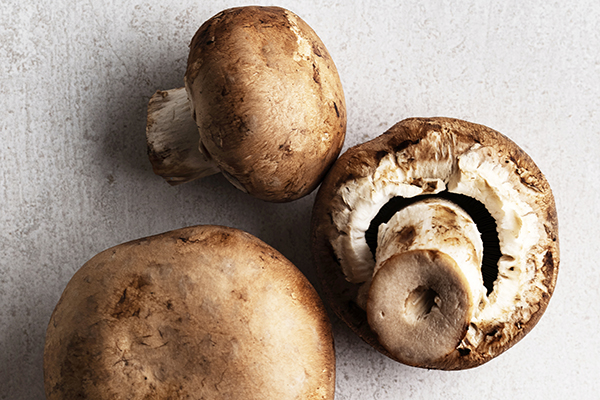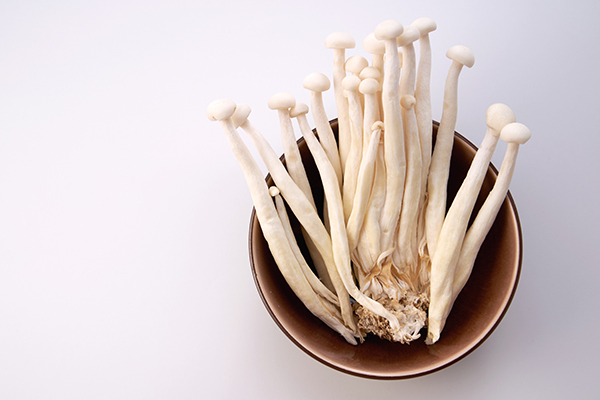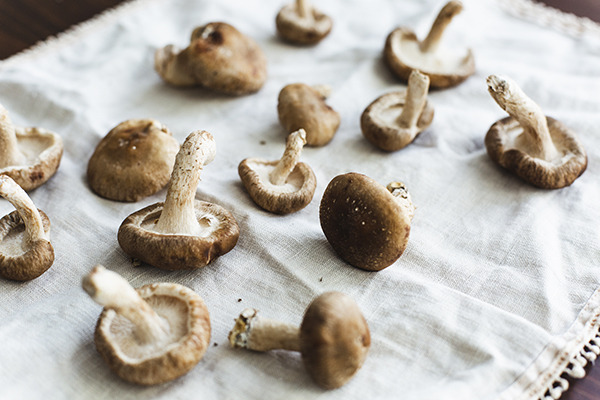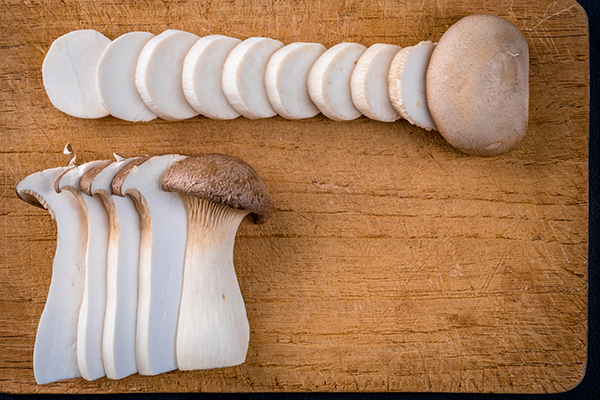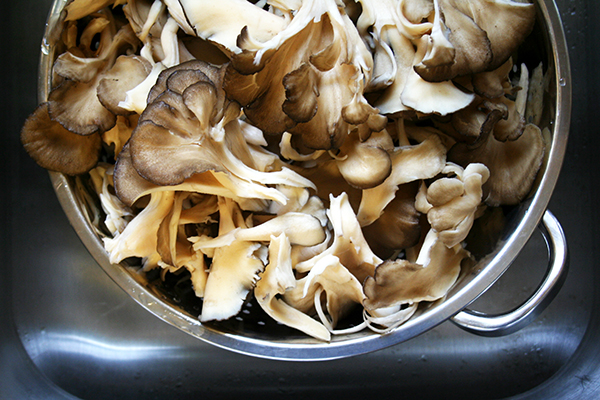Mushrooms hold a special place in global cuisines, but they’ve also carved out a niche as a low-calorie meat replacement for vegetarians and vegans.
While they are great substitutes for the taste and texture of meat, that’s far from their only appeal.
Different varieties of mushrooms lend your meals different tastes and textures, and they’re all worth getting to know.
So while you can’t go wrong with a classic portobello burger, we urge you to get to know the other varieties of mushrooms.
From enoki to chanterelles, here’s what you need to know about several of the delicious varieties available to you at stores.
Mushroom Nutrition Facts
Mushrooms are low-calorie but relatively nutrient-dense, no matter which type you choose.
Per 1 cup, mushrooms boast:
Calories: 15
Protein: 2g
Carbs: 2g
Fiber: 1g
Phosphorous: 60mg
Potassium: 223mg
Selenium: 6.5mcg
Here’s a look at what sets 10 different types of mushrooms apart:
1. Portobello/Cremini
Creminis are just baby portobello mushrooms, which is why you may see them labeled “baby bella mushrooms” at the store.
These mushrooms have an earthy, sometimes slightly meaty flavor, but the standout is their texture.
“You can ‘stretch’ the ground meat in nearly any recipe by adding finely stopped cremini or portobello mushrooms,” says Chelsey Amer, M.S., R.D.N.
2. Porcini
“Fresh porcinis are nutty and earthy, with a tender yet meaty texture,” says Kara Lydon, R.D., L.D.N.
They’re common in Italian and French dishes, but you will find that the fresh mushrooms are costly due to their short season and difficult cultivation, she adds.
Although they hold up well to a wide range of cooking styles, Lydon says it’s best to keep the prep simple to let their flavor and texture shine.
The healthy chef on a budget may want to opt for dried porcinis, which aren’t limited by the short season.
3. White buttons
“White button mushrooms are perfect for mushroom newbies because they have the mildest mushroom flavor,” Amer explains. “They’re typically the type of mushroom you’ll find on pizza, but also go great in pasta dishes and soups.”
Try them on top of our 2B Egg White, Kale, and Mushroom pizza.
4. Enoki
Common in Japanese, Chinese and Korean cuisine, “enoki mushrooms look like long, white noodles with a small button at the end,” explains Lydon.
She adds that they “absorb the other flavors in the dish, which is why they’re often used in soups for a flavorful spoonful and some extra texture.”
Since they’re mild and slightly sweet, they should be added just before the dish is ready so they don’t get overcooked. Try adding them to hot pot.
5. Shiitake
Like portobellos, “shiitake mushrooms are also a meaty mushroom with an earthy flavor,” says Amer.
That means they can be used similarly in dishes. They do require a little more prep, though, because the stems of shiitake mushrooms are tough and should be discarded before using the cap, she adds.
Shiitake mushrooms can also be a source of vitamin D when the gills (the creases on the underside of the caps) are exposed to sunlight or UV light!
6. King Trumpet
King trumpets are also known as king oyster mushrooms. You can eat both the stem and the cap, and they “give off a strong and earthy umami flavor.”
These mushrooms hold up well to high heat, so they can be added to stir-fry dishes and soups and can even be barbecued or grilled.
Since these ‘shrooms boast thick yet tender stems, you can slice them into thick rounds and cook them like scallops!
7. Maitake
This is one mushroom that can stand on its own, so consider giving it the spotlight in its own dish.
It’s able to take center-stage thanks to its unique flavor; Amer explains that they’re “often described as ‘woodsy’ thanks to their hearty flavor.”
You’ll find these “wild” mushrooms in most supermarkets these days. Try them grilled or broiled for extra flavor.
8. Chanterelles
“Due to their distinctive earthy, woody, and sometimes spicy flavor, chanterelles are highly sought after by chefs around the world,” notes Lydon.
Luckily for the rest of us, they’re available canned.
That gives them another advantage: “Chanterelles have a chewy, meaty texture, but the stems can be tough to eat,” but canned versions are softer.
Lydon also notes that chanterelles (like all mushrooms) absorb fat like tasty little sponges.
Swap them into our egg white omelet with mushrooms for a gourmet yet simple morning meal.
9. Beech mushrooms
Beech mushrooms are another variety that should be added at the end “to maintain this unique texture,” says Amer.
Believe us; you’ll want their taste and texture to remain largely unchanged!
Amer explains that’s because “beech mushrooms have a sweeter taste and crisper texture than most other mushrooms.”
10. Morels
“Morels have a deep, earthy, nutty flavor, with a chewy, meaty texture,” Lydon explains, and look like a honeycomb.
“Morels work well in a savory sauce that will bring out a more umami flavor,” she adds. You’ll get a super savory sauce if you choose morels for this hearty mushroom gravy.
They can pair well with both rich ingredients, like red meats, and lighter ones, such as asparagus.
Looking for expert nutrition advice? Learn how Beachbody nutrition programs and products can help you lead a healthier lifestyle at BODNutrition.com.



























